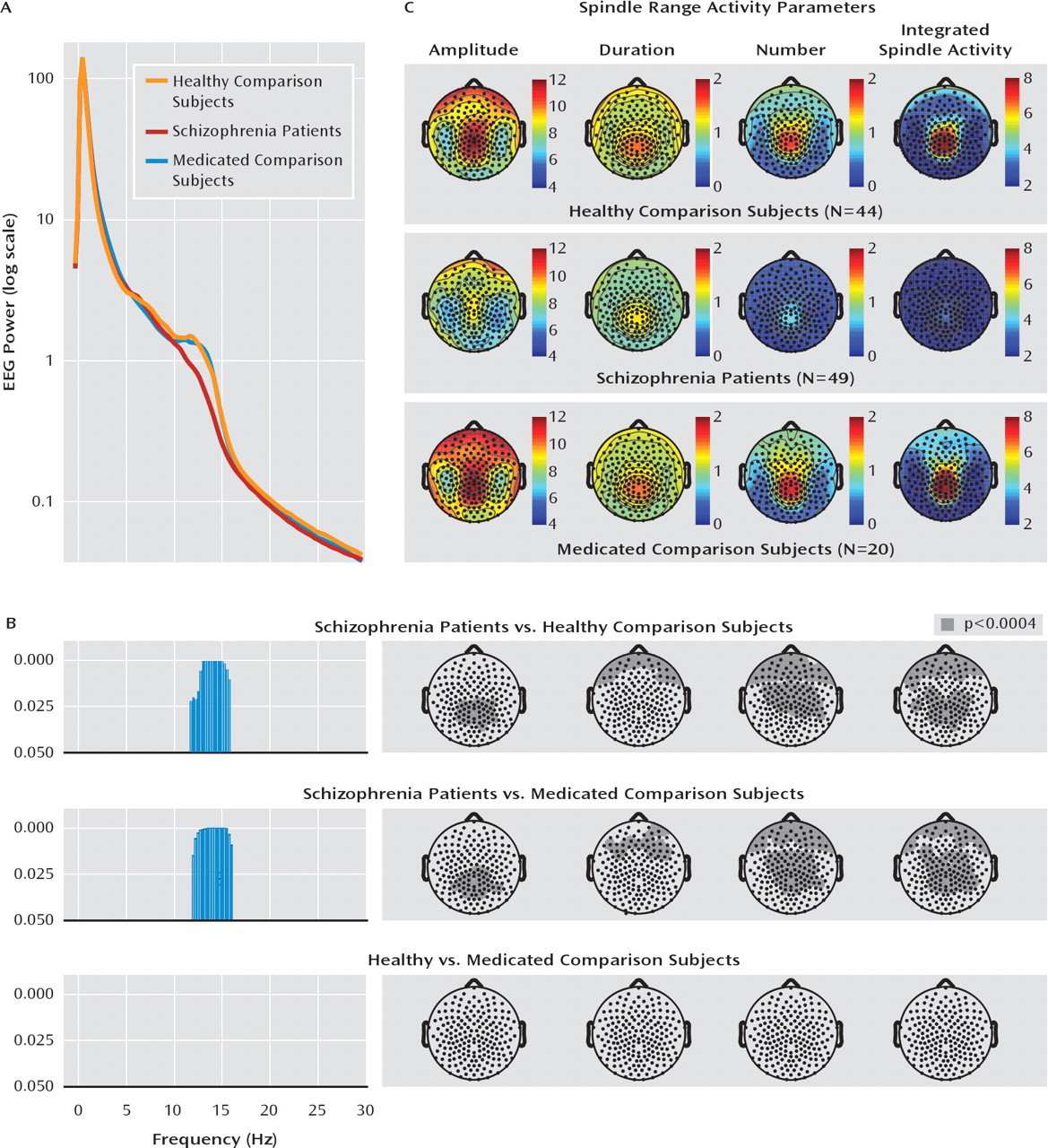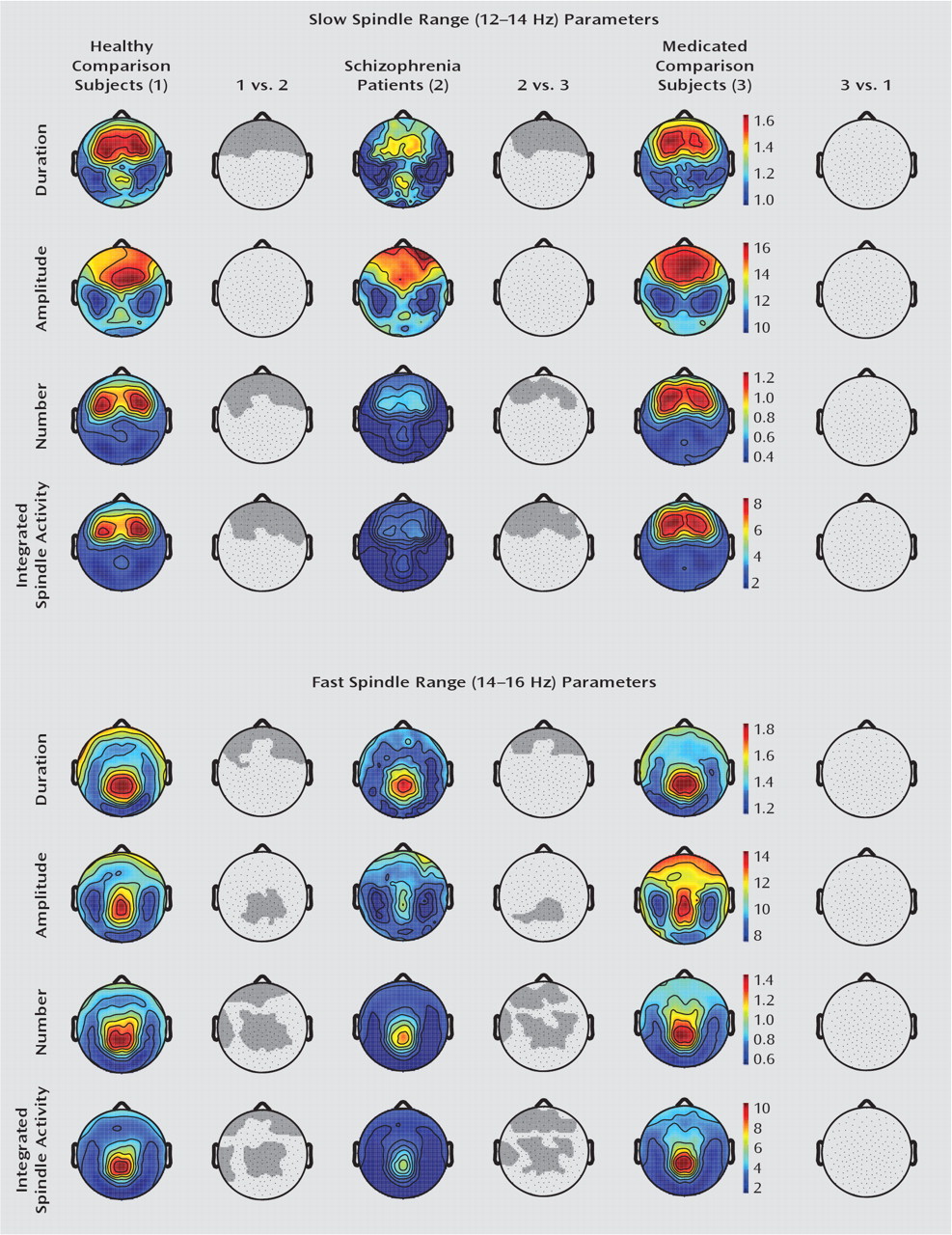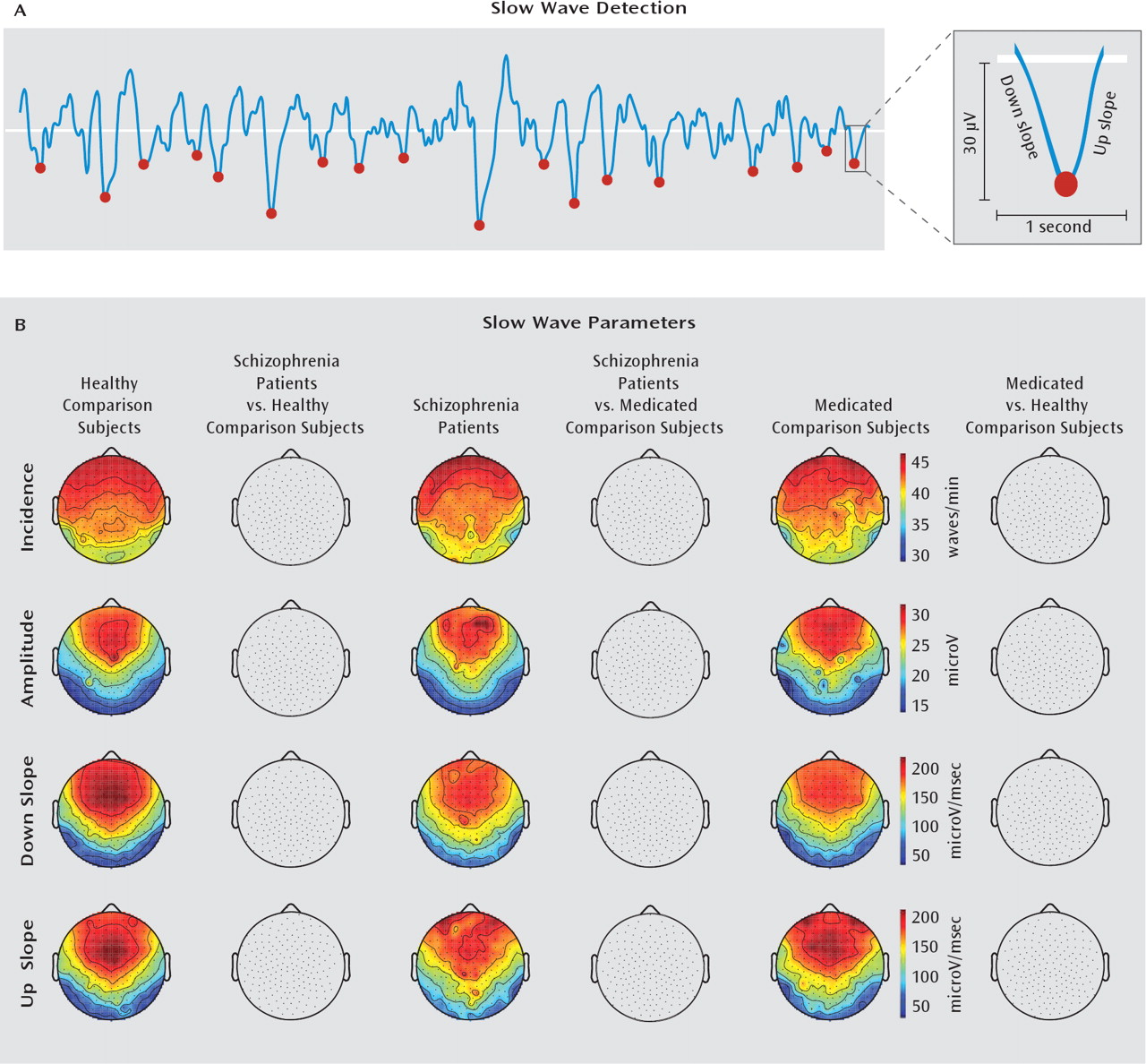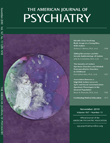Thalamic Dysfunction in Schizophrenia Suggested by Whole-Night Deficits in Slow and Fast Spindles
Abstract
Objective:
Method:
Results:
Conclusions:
Method
Participants
| Variable | Healthy Comparison Subjects (N=44) | Schizophrenia Patients (N=49) | Medicated Comparison Subjects (N=20) | |||
|---|---|---|---|---|---|---|
| Mean | SD | Mean | SD | Mean | SD | |
| Total sleep time (minutes) | 447.6 | 62.0 | 472.5 | 91.0 | 465.8 | 75.8 |
| Sleep onset latency (minutes)b | 14.1 | 1.5 | 26.7 | 3.6 | 20.5 | 4.3 |
| Sleep maintenance (%)c | 90.8 | 9.0 | 91.2 | 10.5 | 92.8 | 9.6 |
| Non-REM stage 1 (%) | 6.3 | 1.3 | 5.7 | 1.3 | 7.9 | 1.9 |
| Non-REM stage 2 (%) | 51.6 | 4.4 | 55.5 | 5.6 | 52.5 | 6.3 |
| Non-REM stage 3 (%) | 21.5 | 3.6 | 19.9 | 5.3 | 19.6 | 5.0 |
| REM (%) | 20.6 | 2.5 | 18.9 | 2.65 | 20.0 | 2.8 |
EEG Recordings
EEG Analysis
Spindle Analysis
Slow Wave Analysis
Statistical Analyses
Results
Sleep Architecture
EEG Power Analysis

Spindle Analysis

Slow Wave Analysis

Cognitive Ability and Spindles
Clinical and Spindle Parameters in Schizophrenia Patients
| Parameter | Spindle Number | Integrated Spindle Activity | ||
|---|---|---|---|---|
| r | pa | r | pb | |
| Duration of illness | −0.25 | 0.09 | −0.15 | 0.31 |
| Hospitalizations | 0.09 | 0.53 | 0.18 | 0.21 |
| Age | −0.33 | 0.02 | −0.09 | 0.51 |
| Medication dose | −0.18 | 0.20 | −0.13 | 0.38 |
| Positive symptoms | −0.40 | 0.005 | −0.37 | 0.01 |
| Negative symptoms | −0.32 | 0.02 | −0.28 | 0.06 |
| General symptoms | −0.20 | 0.17 | −0.19 | 0.20 |
Discussion
Slow Wave Findings in Schizophrenia
Spindle activity deficits in schizophrenia
Spindle deficits are present throughout the night
Spindle deficits are unlikely a result of antipsychotics
Spindle deficits are unrelated to reduced general cognitive ability
Altered spindles suggest thalamic/thalamic reticular nucleus dysfunctions in schizophrenia
Footnotes
Supplementary Material
- View/Download
- 18.60 KB
References
Information & Authors
Information
Published In
History
Authors
Funding Information
Metrics & Citations
Metrics
Citations
Export Citations
If you have the appropriate software installed, you can download article citation data to the citation manager of your choice. Simply select your manager software from the list below and click Download.
For more information or tips please see 'Downloading to a citation manager' in the Help menu.
View Options
View options
PDF/EPUB
View PDF/EPUBLogin options
Already a subscriber? Access your subscription through your login credentials or your institution for full access to this article.
Personal login Institutional Login Open Athens loginNot a subscriber?
PsychiatryOnline subscription options offer access to the DSM-5-TR® library, books, journals, CME, and patient resources. This all-in-one virtual library provides psychiatrists and mental health professionals with key resources for diagnosis, treatment, research, and professional development.
Need more help? PsychiatryOnline Customer Service may be reached by emailing [email protected] or by calling 800-368-5777 (in the U.S.) or 703-907-7322 (outside the U.S.).

